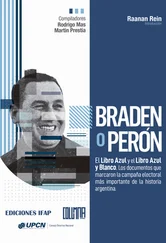In 1986 the Komsomol set up a new Administration for Afghan Questions. In April 1990 the Supreme Soviet set up a Committee for Soldier-Internationalists’ Affairs: there were thirteen Afgantsy among its members. 18The Union of Veterans of Afghanistan (SVA) was set up in 1989 by Alexander Kotenov, the son of a Soviet officer who had spent four years in the Gulag. After being blown up by a mine, and disillusioned by the war, Kotenov became a military historian. By 1991 the SVA claimed to represent more than three hundred thousand Afghan veterans. Kotenov resigned in 1995 in protest against government interference in the organisation’s affairs. 19
The Russian Union of Veterans of Afghanistan (RSFA), was set up as an offshoot of the SVA in November 1990. Those present at the founding congress included General Varennikov, Vice-President Alexander Rutskoi, Metropolitan Pitirim and Chief of Staff General Moiseev. Its first chairman was Yevgeni Lyagin. He was followed at the end of 1991 by Kotenov, and then in 2001 by Frants Klintsevich, a political officer in the 345th Guards Independent Parachute Assault Regiment.
The Russian Fund for Invalids of the War in Afghanistan (RFIVA) was set up in 1991. Its subsequent career was turbulent. Its chairman, Mikhail Likhodei, was assassinated in November 1994. Two years later a subsequent chairman, Sergei Trakhirov, and fourteen others were killed, and twenty-four more wounded, when a bomb exploded as they were laying a wreath at a memorial to the Afgantsy in the Kotlyarovskoe Cemetery in Moscow. The subsequent attempt to bring the perpetrators to justice was murky and only partly successful. One suspect was still standing trial in the summer of 2007. 20After these excitements the RFIVA was renamed the All Russian Social Organisation for Invalids of the War in Afghanistan (OOOIVA). Such stories were not uncommon in the Yeltsin years, when ambitious and ruthless men were fighting—literally—to the death to get their hands on the spoils of the failed Soviet state.
The Boevoe Bratstvo, the Brotherhood of Arms, was set up under General Gromov in 1997. With close links to the authorities, it became one of the most influential veterans’ organisations in the new century. It joined the Internet age with enthusiasm, setting up its own national and regional websites, which it claimed were the largest of their kind in Russia.
Yeltsin gave the veterans’ organisations special privileges—tax breaks, commercial privileges, customs exemptions on alcohol, tobacco, and oil products, access to foreign currency, sanatoriums, and commercial enterprises worth millions of roubles—which had become available through his policies of ‘privatisation’. Bodies such as the National Sporting Fund were similarly privileged, and the practice was one more sign of the collapse and fragmentation of the state. In effect the state handed over to the private sector its responsibilities for those who had fought in its wars. In the chaotic and corrupt conditions of the early 1990s, all this was a licence to print money. A small number of people at the top of the Afghan veterans’ organisations got very rich. Only 24 per cent—and according to some calculations, only 9 per cent—of the money actually reached the disabled ex-servicemen for whom it was intended. 21
This dubious system began to be rethought even before the explosion in the cemetery. In 1995 a revised Veterans’ Law finally awarded the Afgantsy the full status and title of ‘veterans’. 22This law gave veterans of all classes fairly broad social benefits, but unfortunately these were no more adequately funded than the benefits that preceded them. Matters were further confused by the Russian government’s decision in 2004 to convert benefits in kind—bus passes, holiday vouchers, and the like—into financial payments of dubious value in an inflating economy. The reform of local government in 2006 reallocated responsibility for the administration of benefits yet again. The rapid growth in the Russian economy after 2000 did, however, significantly improve the state’s ability to meet its financial obligations to its citizens.
Because these veterans’ organisations saw it as one of their tasks to encourage patriotism and respect for the armed forces, especially among the young, their place in President Putin’s more assertive Russia was assured. Some of their leaders, such as Frants Klintsevich, went into national politics; by 2007 he was deputy leader of the pro-Putin United Russia faction in the Duma, and Chairman of the Duma Committee which dealt with the problems of pensioners and veterans. In the autumn of 2007 several of the veterans’ organisations supported the electoral campaign of Putin and United Russia without inhibition. 23
Soldiers returning from any war have to adjust to a world which cannot understand what they have been through, to people who have not been there, and who are not interested or interested only in a legend of heroism, rather than the traumatic reality of battle. The soldiers have seen horrible things and some of them have done horrible things. They suffer nightmares, they quarrel with their wives, they commit violence in the home and on the street, they drop to the ground at the sound of a car backfiring, they are especially haunted by the death of children. 24A month or a year may separate these reactions from the events that trigger them off. The sufferers may be able to fend off the memories by shutting down their emotions, by becoming emotionally numb. The condition may last for months or even years. Because they have been in the military, with its culture of heroism, discipline and masculine toughness, they find it hard to talk of their experiences or seek help outside their own circle of fellow veterans. 25
The suffering is not confined to those who have fought and killed. British peacekeepers in Bosnia, who fought only in self-defence if at all, showed many of the same symptoms. So do civilians who have been involved in catastrophic events—in traffic accidents, natural disasters, or as victims of violent crime. Since the 1980s, the phenomenon has been given a name: post-traumatic stress disorder, PTSD.
American studies show that 20–30 per cent of the American soldiers who had fought in the deeply unpopular Vietnam War suffered from PTSD, compared with only 15 per cent of those who fought in the first Gulf War in 1991, which was popularly perceived as just and necessary. 26American soldiers returning from the second Iraq war after 2003 were statistically at greater risk—from suicide, murder, assault, drunken driving, and drug use—than they were while they were fighting there. 27
But even when a nation believes it has embarked on a ‘just war’, the rationale fades as the carnage mounts, and the soldiers no longer fight for a cause, but to survive and to help their comrades do the same. The victorious British soldiers who came home from the Second World War were heroes in theory. In practice they were often resented by civilians who had themselves experienced real privation and the danger of violent death from the air. Jobs were scarce, or incompatible with the skills and positions that the veterans believed their service entitled them to. The divorce rate in Britain soared by fifteen times between 1935 and 1947, as couples separated by war failed to rebuild their shattered lives. Violent crime increased by two and a half times in the ten years to 1948. Sexual offences tripled. The newspapers were full of stories of soldiers murdering their wives. The veterans turned to the familiar warmth of contacts with surviving comrades, rather than family, as the first line of defence against a civilian world they perceived as unwelcoming, even hostile. As time went by, most of them slowly settled back into civilian and domestic life. Comrades drifted apart and comradeship was replaced by nostalgia for a generalised picture of a heroic war. But the symptoms could return years and even decades after peace had come. As late as 2001, one in five of the British veterans of the Second World War still displayed war-related psychological distress. 28
Читать дальше












